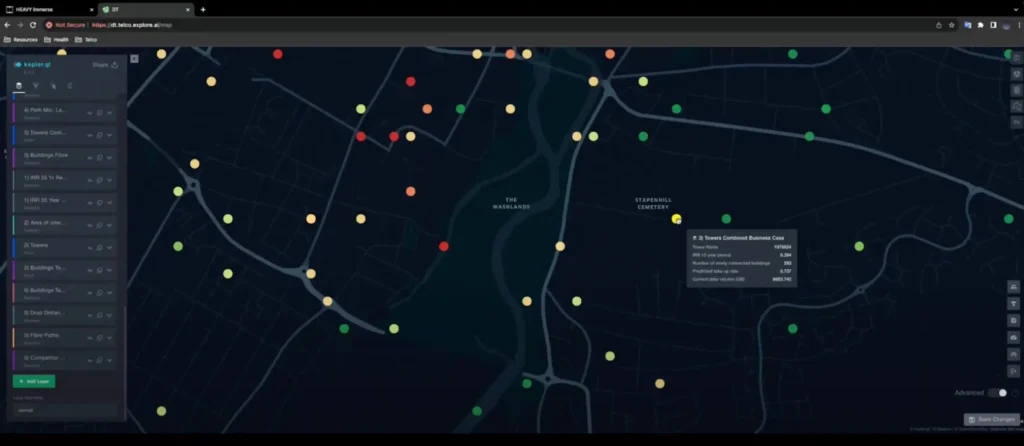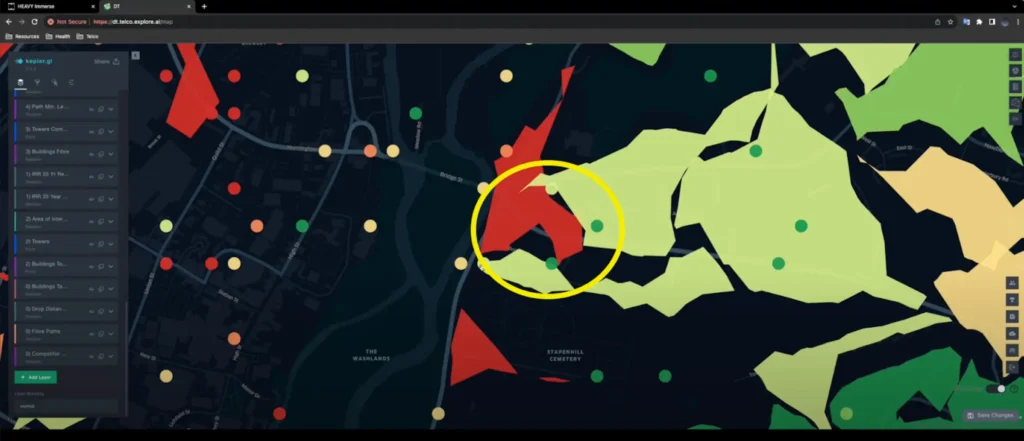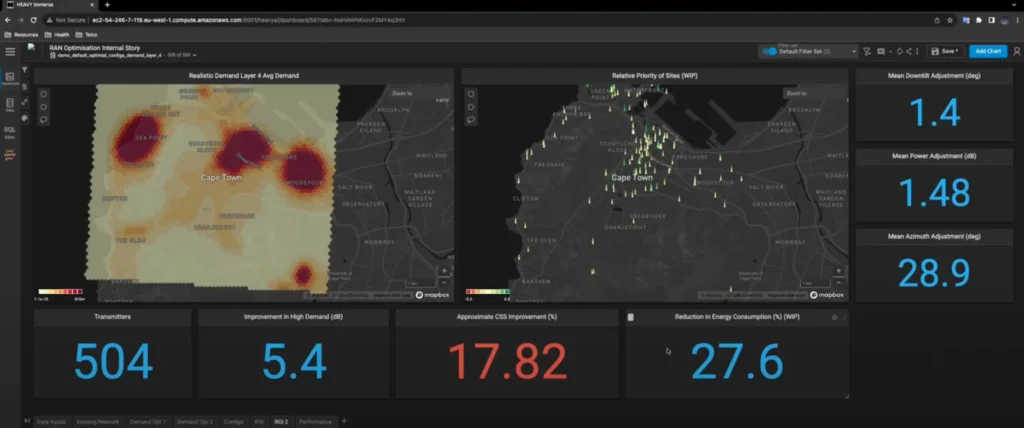
Network planning is the backbone of the telecommunications industry, ensuring that the intricate web of connections we rely on daily is robust and efficient. Connectivity underpins everything from social interactions to business operations. And effective network planning is the silent force that keeps these digital interactions running smoothly. It enables innovation and connects communities like never before.
With strategic network planning, telecommunications leaders can respond to ballooning network traffic demands and anticipate expansion for future growth. This meticulous process considers capacity, coverage and performance to maintain a seamless user communication experience.
With data traffic volumes skyrocketing and user expectations for seamless experiences at an all-time high, telcos grapple with outdated tools and methodologies that don’t keep pace. Traditional network planning methods frequently lack agility and precision to manage resources efficiently or anticipate future network needs.
The complexity of integrating new technologies and the pressure to optimize operational costs exacerbates the situation, leading to inefficiencies and potential service disruptions. Telcos must rethink their network planning strategies, leveraging AI and advanced analytics to drive smarter, more adaptive network management and determine cost-effective plans to expand their networks and stay competitive.
Artificial intelligence changes network planning from a tedious, manual task to an exciting, dynamic process. By leveraging advanced algorithms and machine learning, this innovative approach can optimize network configurations, enhance performance and predict future needs with remarkable speed and accuracy. It’s not just about the future of network planning; it will change how telecoms think about and manage their digital infrastructures.
Network planners must consider an ever-increasing amount of data when making network investment decisions. AI can analyze and integrate massive datasets and provide scenario modeling to help organizations make prudent choices.
Network planning has traditionally been a process with potential human error. However, AI can automate traditional labor-intensive planning required by network engineers. AI automation minimizes the risk of errors and ensures a more efficient and reliable network infrastructure. Through sophisticated algorithms and machine learning models, AI can analyze massive datasets, predict network demands and optimize resource allocation in real time.
Operators can optimize their network design and resource allocation with AI to achieve unprecedented levels of efficiency. Consider a network that predicts and adapts to network traffic, ensuring seamless connectivity and superior user experiences. AI algorithms analyze traffic data to identify patterns and forecast demand, enabling precise resource allocation that minimizes waste and maximizes performance.
The integration of AI and predictive analytics is revolutionizing network planning. With these advanced technologies, telecom companies can accurately predict future network traffic patterns, analyze historical network data, identify complex trends and anticipate future demand. These models can optimize network performance, address potential bottlenecks and significantly reduce latency and network congestion. Imagine a network that self-adjusts based on real-time and forecasted data, providing unparalleled service quality and reliability.
Imagine seeing realistic telecom network simulations that can accurately predict and adapt to real-world conditions. With AI, this is now a reality. AI helps operators create virtual models of their networks that accurately mirror their physical environment. These AI-driven simulations are revolutionizing the industry by enabling predictive maintenance, optimizing resources and enhancing network reliability.
"AI promises to elevate the telecommunications experience, ushering in a new era of efficiency, reliability, and unparalleled user experiences.
Sand Technologies’ AI and analytics-based network planning model provides granular insights for telecom leaders to determine optimal network expansion plans using machine learning, network graphs, geospatial analytics and other data. The insights maximize network investments for the best reach.
Companies are using the model in several ways. The analytics can determine what tweaks to make on each tower to maximize reach and signal strength. Further, the industry must find ways to address the ballooning demand for greater bandwidth and faster network speeds. This model also identifies the most cost-effective strategies to expand and update their networks.
Digital twins are most commonly associated with manufacturing. However, digital twins have powerful capabilities that can benefit any industry. This technology allows companies to simulate real-world operations and run multiple what-if scenarios with their impact. Scenario testing leads to more informed decisions, ultimately reducing poor investments.
Our Network Digital Twin can model complex network scenarios, uncovering patterns, anomalies and opportunities for growth. Operators can run real-time experiments that determine how to optimize network configurations that adapt to demand fluctuations and guide fiber rollouts to capture more value.
Several forward-thinking telcos are leveraging these AI-driven network planning tools to meet growing demand and plan cost-effective network expansions. In the image below, the model is helping identify profitable uptake areas. Each colored dot represents an existing tower and its profitability, with red indicating low profit and green indicating high profit.

This tool helps telecoms quickly determine preferable investment opportunities by overlying tower profitability with various fiber rollout plans in Figure 2. Zooming in, operators see expansion opportunities with two highly profitable towers alongside a low-profit fiber rollout plan that the model generated.

In this case, the telecom can optimize the two identified towers to add more users without investing in an expensive fiber rollout.
In another use case, Figure 3 below shows the results of an operator analyzing its network for a specific region. High signal demand is on the left (dark red circles), and existing towers are on the right. Each green tower represents an opportunity to make adjustments that could significantly improve network performance and the customer experience. The underlying technology can also help optimize power based on demand, reducing consumption and contributing to the operator’s sustainability goals.

The digital twin found 504 configuration adjustments that could achieve these network improvements:
Major telecom companies in Asia currently use these real-world models. These telecoms have embraced the full benefits of AI and digital twins. They enjoy various benefits, including optimized and accurate network planning, improved IRR, reduced cost-to-build, and better long-term planning. AI-based digital twins improve decision-making and increase efficiency. The single source of truth means a standard set of data for all models and reporting.
While the potential for AI to transform network optimization, predictive maintenance and customer experience is immense, this innovation comes with hurdles such as data privacy concerns, algorithmic biases and the complexity of integrating AI with existing systems.
Data privacy and security have emerged as critical concerns that deserve immediate attention. While AI offers unprecedented opportunities for innovation and efficiency, it also poses significant ethical challenges. How can we ensure that our data remains protected in an era where algorithms can process vast amounts of information in seconds?
AI systems require large datasets (some containing sensitive data) to provide optimal results. However, biases in machine learning algorithms can lead to unfair or suboptimal outcomes, further complicating the planning process. Integrating AI into established telecom infrastructures poses significant technical challenges, necessitating a blend of expertise in traditional and AI-driven methodologies. Addressing these risks will be crucial in harnessing the full potential of AI to revolutionize telecom network planning.
The answer lies in implementing robust data protection measures and fostering a culture of transparency and accountability. By addressing these concerns head-on, companies can harness the potential of AI responsibly, ensuring it serves humanity while respecting our fundamental rights to privacy and security.
The telecommunications industry stands on the brink of a revolution driven by AI’s untapped potential. From optimizing customer service with intelligent chatbots to enhancing network security through predictive analytics, AI promises to elevate the telecommunications experience. As AI continues to evolve, its influence on the telecommunications industry will grow, ushering in a new era of efficiency, reliability and unparalleled user experiences.
Other articles that may interest you